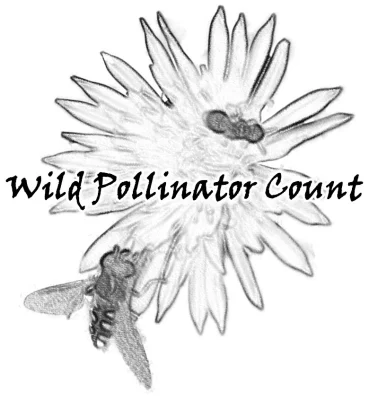What is iNaturalist?
“iNaturalist is an online social network of people sharing biodiversity information to help each other learn about nature.
It’s also a crowdsourced species identification system and an organism occurrence recording tool. You can use it to record your own observations, get help with identifications, collaborate with others to collect this kind of information for a common purpose, or access the observational data collected by iNaturalist users.”
– iNaturalist.org
You don’t have to use iNaturalist to participate in the Wild Pollinator Count but if you have photos to share and/or are keen to interact with other people with an interest in insects (and nature more broadly) it might be of interest to you. See this post for an overview of the Wild Pollinator Count on iNaturalist.
Learn about iNaturalist
We recommend checking out the terrific resources on iNaturalist to introduce the platform and get up and running:
- Overview and getting started guide: https://www.inaturalist.org/pages/getting+started
- Video tutorials: https://www.inaturalist.org/pages/video+tutorials
- Help and Frequently Asked Questions: https://www.inaturalist.org/pages/help
To contribute to the Wild Pollinator Count on iNaturalist:
- Create an iNaturalist account (and consider popping some information into the profile you create!)
- Join the Wild Pollinator Count project by either searching for it in the ‘projects’ menu along the top of your iNaturalist dashboard when logged in or by following this link and clicking the ‘join’ button at the top right.
- Add an observation
On iNaturalist each observation is of one species. You can include multiple photos of that species to capture details that may assist with ID. If you have photos with more than one species in a shot, you can upload that image twice and indicate which one you are referring to – for example if you have a photo of a honey bee and hoverfly, you could upload these as two records, each noting a separate species. Alternatively, you might crop your photo to focus on the species for each record.
Bear in mind it can be difficult (and even impossible) to identify many insects to species from photos. Identification will often be at genus or family level – and this is valuable information! Including several photos from various angles can help increase the likelihood of identification, as can cropping to capture the detail. You can also add notes for details the photo doesn’t capture.

- Add your observation to the Wild Pollinator Count project
You can add your observation to our project either as you enter it or afterwards (handy if you are uploading multiple photos at once).
While adding or viewing the observation, select Wild Pollinator Count from the list of projects you have joined. Then complete the additional fields our project requires – the plant name, whether it is native or introduced and whether the observation was part of a 10-minute wild pollinator count.

Optional: identify sightings
iNaturalist enables users to add identifications to each other’s observations to confirm or improve the ‘community identification’. We recommend becoming familiar with how this process works for both your own observations and when contributing identifications to other people’s observations.
From iNaturalist “Please do not simply “Agree” with an ID that someone else has made without confirming that you understand how to identify that taxon. An identification confirms that you can confidently identify it yourself compared to any possible lookalikes. If you agree with the ID without actually knowing the taxon, it may reach Research Grade erroneously.”
Find out more about identifying sightings, community identification and research grade status here.
But wait, there’s even more …
This is a brief overview for adding records to the Wild Pollinator Count iNaturalist project. iNaturalist has many additional functions that we encourage you to explore if you would like to do more on this platform or tweak the way the site works for you.
Visit the iNaturalist help pages or user forums for more information.

5 thoughts on “Wild Pollinator Count on iNaturalist”